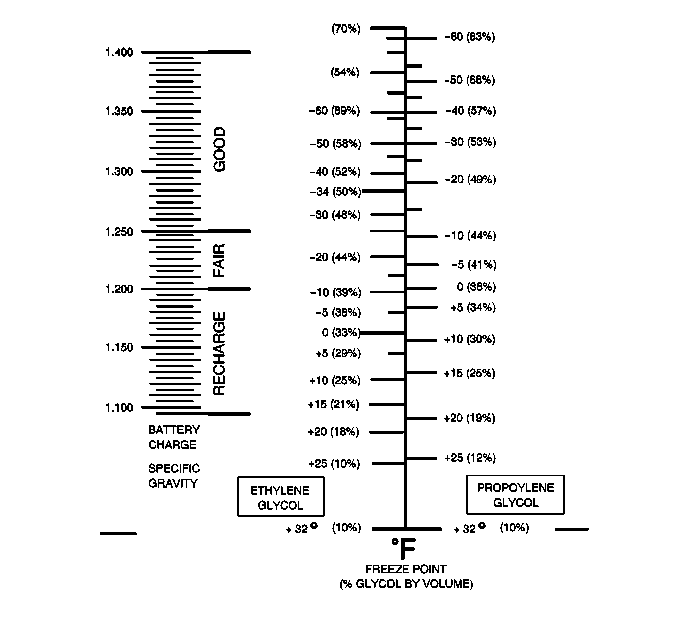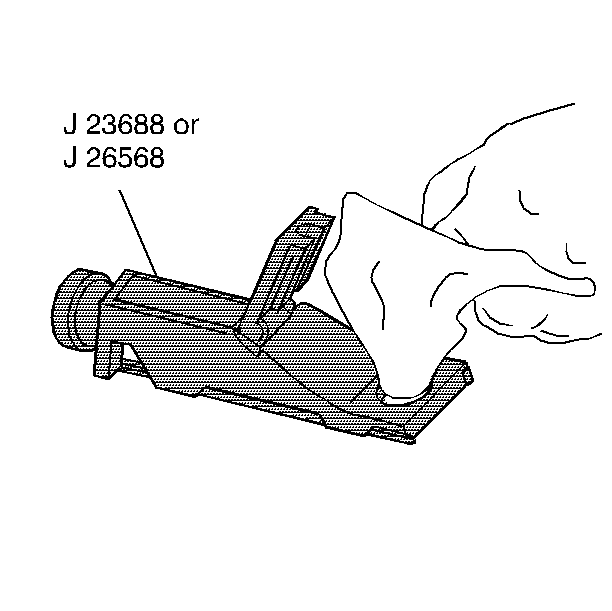Glycol Usage
Before you drain and refill the coolant, inspect the cooling system. Perform any service needed in order to ensure that the system is clean, does not leak, and is in proper working order.
Some coolant manufacturers mix other types of glycol into their coolant formulations. Propylene glycol is the most common new ingredient. However, do not use propylene glycol in GM vehicles that were manufactured with DEX-COOL® coolant.
A hydrometer does not always provide a correct measurement of freeze protection when you are testing anything other than ethylene glycol and water. The degree of inaccuracy varies depending on the proportion of other glycols present in the coolant.
Hydrometers test the amount of glycol in a mixture by measuring the specific gravity of the mixture. For example, the more ethylene glycol, the higher the float balls go, and the better the freeze protection. Because ethylene glycol and propylene glycol do not have the same specific gravities, hydrometer readings of mixtures containing propylene glycol give incorrect values. Use a refractometer when you test the coolant. Refractometers test the amount of glycol in a coolant mixture by measuring the speed of light as the light passes through the fluid, and is not affected by the specific gravity of the glycol.
Testing Procedure
Tools Required
| • | J 23688 Coolant Tester (Fahrenheit Scale) |
| • | J 26568 Coolant Tester (Centigrade Scale) |
- Release the tip of the pump from the housing of the J 23688 or the J 26568 .
- Do not remove the clear plastic pump from the J 23688 or the J 26568 .
- Remove the surge tank cap.
- Insert the tip of the pump into the surge tank. The tip of the pump must be below the level of the coolant.
- Press the bulb. Release the pump bulb in order to obtain a sample of the coolant.
- Bend the tube around the J 23688 or the J 26568 . Insert the tip of the pump into the cover plate opening.
- Press the pump bulb. Allow a few drops to fall onto the measuring surface. Do not open the plastic cover when taking readings because any water evaporation will change the reading.
- Point the coolant concentration tester toward any light source. Look into the eyepiece.
- If the readings are not clear, properly clean and dry the measuring surface. Conduct a new test. Ensure there is enough fluid on the measuring surface.
Important:
• Before each use, swing back the plastic cover at the slanted end
of the coolant tester, exposing the measuring window and the bottom of the
plastic cover. • Wipe the measuring window dry with a tissue or a clean, soft cloth. • Close the plastic cover.
Caution: As long as there is pressure in the cooling system, the temperature can be considerably higher than the boiling temperature of the solution in the radiator without causing the solution to boil. Removal of the pressure cap while the engine is hot and pressure is high will cause the solution to boil instantaneously -- possibly with explosive force -- spewing the solution over the engine, fenders and the person removing the cap.


| • | The coolant protection reading is at the point where the dividing line between light and dark crosses the scale. Antifreeze protection is the scale on the right. |
| • | The temperature scale is reversed from a standard thermometer scale. Below 0 readings are on the upper half of the scale. |

